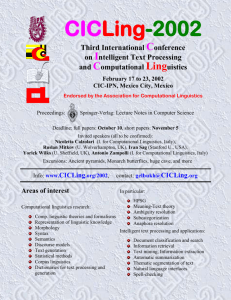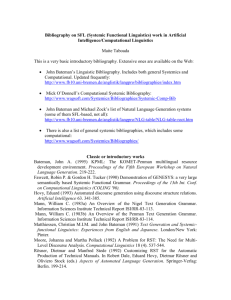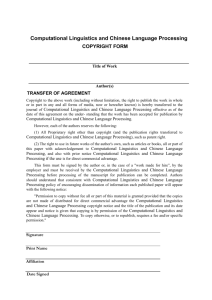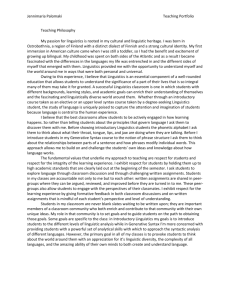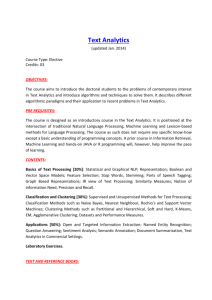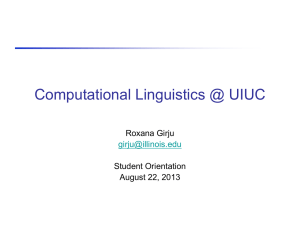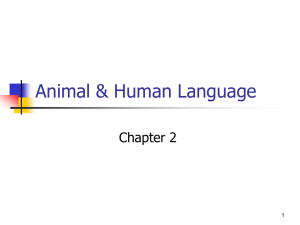File
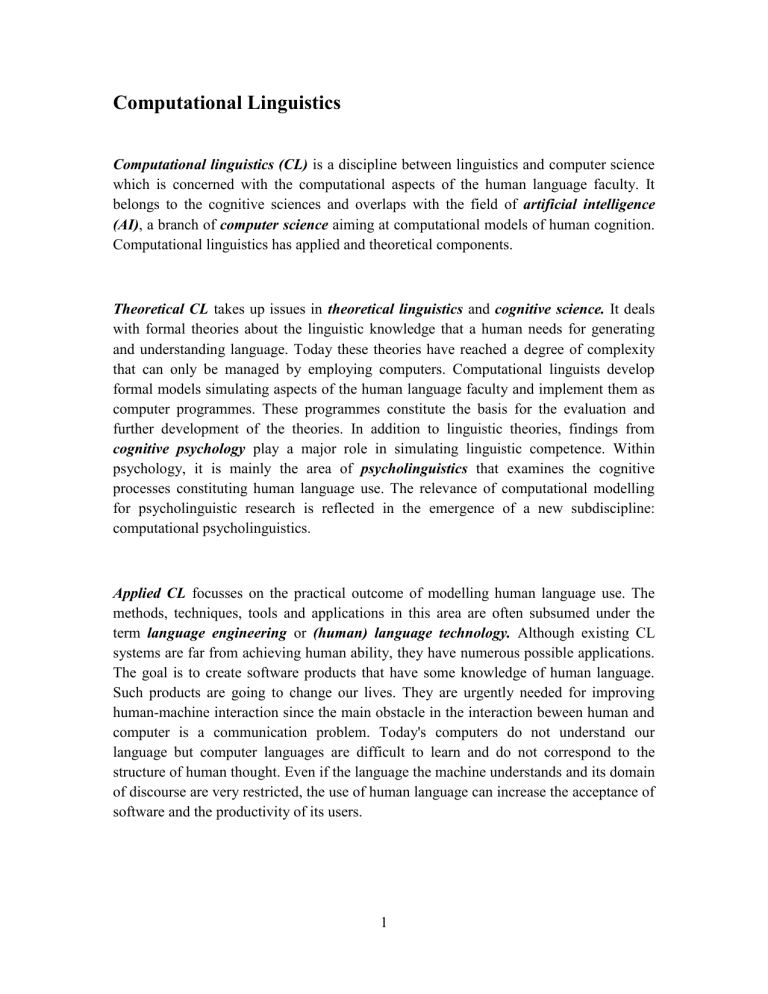
Computational Linguistics
Computational linguistics (CL) is a discipline between linguistics and computer science which is concerned with the computational aspects of the human language faculty. It belongs to the cognitive sciences and overlaps with the field of artificial intelligence
(AI) , a branch of computer science aiming at computational models of human cognition.
Computational linguistics has applied and theoretical components.
Theoretical CL takes up issues in theoretical linguistics and cognitive science.
It deals with formal theories about the linguistic knowledge that a human needs for generating and understanding language. Today these theories have reached a degree of complexity that can only be managed by employing computers. Computational linguists develop formal models simulating aspects of the human language faculty and implement them as computer programmes. These programmes constitute the basis for the evaluation and further development of the theories. In addition to linguistic theories, findings from cognitive psychology play a major role in simulating linguistic competence. Within psychology, it is mainly the area of psycholinguistics that examines the cognitive processes constituting human language use. The relevance of computational modelling for psycholinguistic research is reflected in the emergence of a new subdiscipline: computational psycholinguistics.
Applied CL focusses on the practical outcome of modelling human language use. The methods, techniques, tools and applications in this area are often subsumed under the term language engineering or (human) language technology.
Although existing CL systems are far from achieving human ability, they have numerous possible applications.
The goal is to create software products that have some knowledge of human language.
Such products are going to change our lives. They are urgently needed for improving human-machine interaction since the main obstacle in the interaction beween human and computer is a communication problem. Today's computers do not understand our language but computer languages are difficult to learn and do not correspond to the structure of human thought. Even if the language the machine understands and its domain of discourse are very restricted, the use of human language can increase the acceptance of software and the productivity of its users.
1
Natural language interfaces enable the user to communicate with the computer in French,
English, German, or another human language. Some applications of such interfaces are database queries, information retrieval from texts, so-called expert systems, and robot control. Current advances in the recognition of spoken language improve the usability of many types of natural language systems. Communication with computers using spoken language will have a lasting impact upon the work environment, completely new areas of application for information technology will open up. However, spoken language needs to be combined with other modes of communication such as pointing with mouse or finger.
If such multimodal communication is finally embedded in an effective general model of cooperation,we have succeeded in turning the machine into a partner.
Much older than communication problems between human beings and machines are those between people with different mother tongues. One of the original aims of applied computational linguistics has always been fully automatic translation between human languages. From bitter experience scientists have realized that they are still far away from achieving the ambitious goal of translating unrestricted texts. Nevertheless computational linguists have created software systems that simplify the work of human translators and clearly improve their productivity. Less than perfect automatic translations can also be of great help to information seekers who have to search through large amounts of texts in foreign languages.
The rapid growth of the Internet/WWW and the emergence of the information society poses exciting new challenges to language technology. Although the new media combine text, graphics, sound and movies, the whole world of multimedia information can only be structured, indexed and navigated through language. For browsing, navigating, filtering and processing the information on the web, we need software that can get at the contents of documents. Language technology for content management is a necessary precondition for turning the wealth of digital information into collective knowledge. The increasing multilinguality of the web constitutes an additional challenge for our discipline. The global web can only be mastered with the help of multilingual tools for indexing and navigating. Systems for crosslingual information and knowledge management will surmount language barriers for e-commerce, education and international cooperation.
We still do not know very well how people produce and comprehend language. Yet our understanding of the intricate mechanisms that underly human language processing keeps growing. Modelling such mechanisms on a computer also helps us to discover and formally describe hidden properties of human language that are relevant for any kind of
2
language processing including many useful software applications. Our long term goal is the deep understanding of human language and powerful intelligent linguistic applications. However, even today's language technologies full of clever short cuts and shallow processing techniques can be turned into badly needed software products.
For many students and practitioners of computational linguistics the special attraction of the discipline is the combination of expertise from the humanities, natural and behavioural sciences, and engineering. Scientific approaches and practical techniques come from linguistics, computer science, psychology, and mathematics. At some universities the subject is taught in computer science at others it belongs to linguistics or cognitive science. In addition there is a small but growing number of programs and departments dedicated solely to computational linguistics.
3
